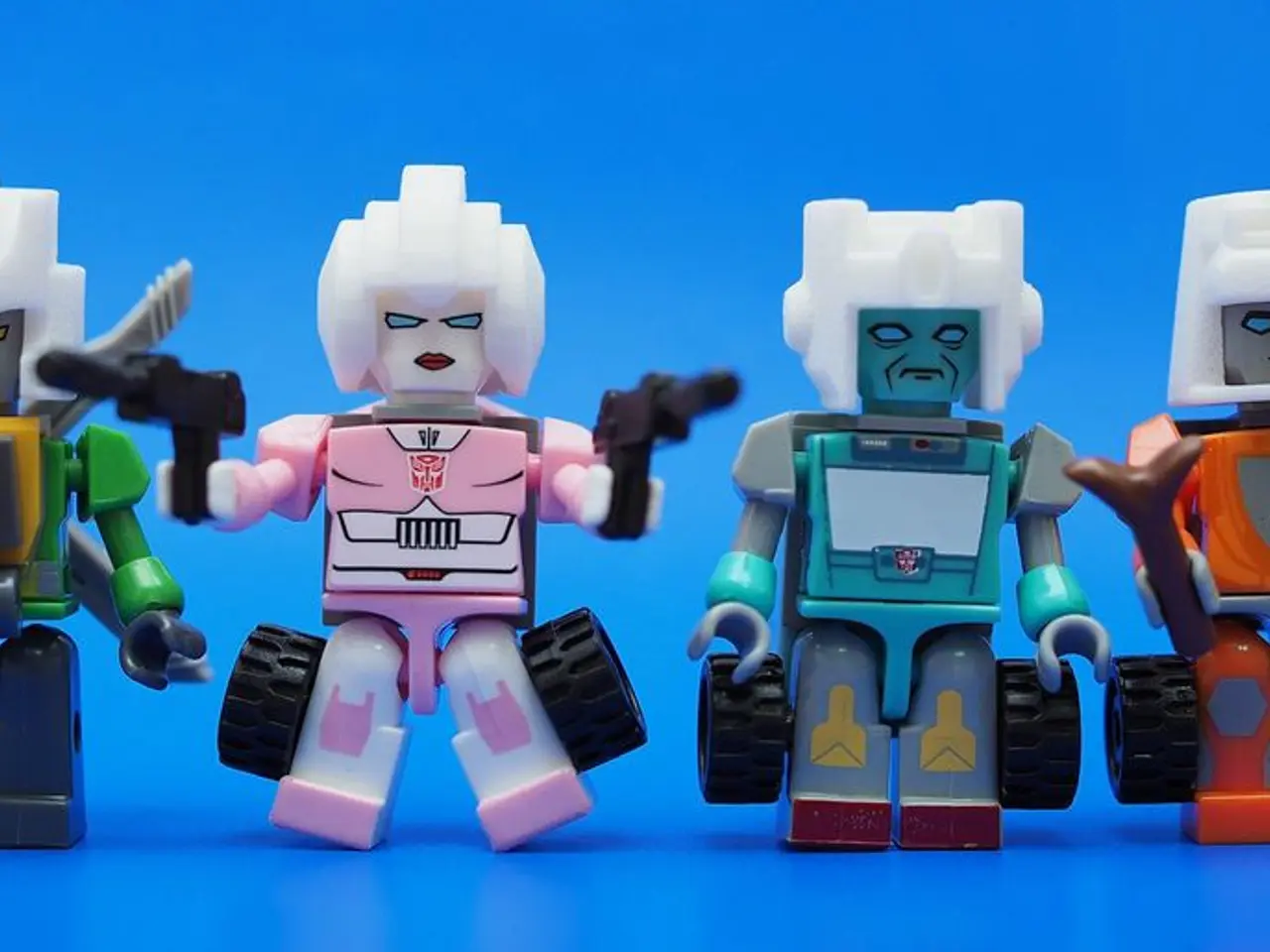Boston Dynamics' Canine-like Robot Capable of Unlocking Doors
Boston Dynamics, a leading robotics company, is revolutionising the field with its innovative robot series - SpotMini, Spot, and Atlas. Each robot is designed with distinct capabilities and specifications to cater to various tasks, contributing to the company's mission of changing "your idea of what robots can do."
SpotMini: The Agile Pioneer
The original smaller, quieter quadruped robot, SpotMini, was designed for agile movement in complex environments. Capable of climbing stairs, opening doors, and navigating rough terrain, SpotMini served as the precursor to the commercially available Spot but is no longer produced as a standalone model.
Spot: Versatility and Stability
An evolution of SpotMini, Spot is a versatile four-legged robot known for its stability and adaptability across terrains, including stairs, rubble, and uneven ground. Originally developed for military support and search-and-rescue, Spot is now widely used commercially. It features sophisticated sensors such as LiDAR and cameras, enabling autonomous navigation, obstacle avoidance, and remote operation. Spot can carry payloads like the Leica RTC360 3D laser scanner for tasks such as reality capture, allowing automated, repeatable scanning routes with minimal human supervision. Applications include mining site inspections in hazardous environments, production of digital twins of tunnels, and industrial inspections in confined or dangerous locations.
Atlas: Dynamic Mobility and Manipulation
Atlas, a humanoid robot, focuses on dynamic mobility and manipulation. Capable of walking, running, jumping, and performing complex movements like crawling, Atlas continuously senses its surroundings and adapts in real time. Atlas combines advanced perception with bipedal locomotion to navigate environments requiring dexterity and balance. Its capabilities support research into autonomous humanoid robotics for tasks requiring mobility in human-centric spaces.
Comparing the Robots
| Robot | Form Factor | Locomotion | Key Features | Typical Uses | |-----------|----------------|--------------------------|-----------------------------------------------------|-----------------------------------------------| | SpotMini | Quadruped | Four-legged agile walking| Smaller size; manipulator arm; quieter operation | Research and development | | Spot | Quadruped | Four-legged walking | Multi-sensor suite (LiDAR, cameras), payload capable, autonomous navigation, remote operation | Industrial inspections, mining, construction, reality capture | | Atlas | Humanoid | Bipedal dynamic locomotion| Running, jumping, crawling, continuous environment sensing | Research, dynamic mobility trials |
Practical Deployment and Experimental Innovation
Spot stands out for its practical commercial deployment, especially with sensor integrations like Leica's RTC360 scanner enabling automated site scans while navigating challenging terrains autonomously. Atlas is more experimental, emphasizing advanced mobility and manipulation.
The SpotMini robot, a smaller version of the Spot robot, is designed by Boston Dynamics to change the perception of what robots can do. The video titled "Hey Buddy, Can You Give Me a Hand?" featuring the SpotMini robot was posted on Boston Dynamics' YouTube channel yesterday and has over 1.8 million views, causing widespread amazement and goosebumps on the Internet.
Atlas, referred to as the world's most dynamic humanoid by Boston Dynamics, is capable of two-handed mobile manipulation and can perform acrobatic feats such as backflips. The SpotMini robot measures 33 inches and weighs 66 lbs, or 55 lbs without the neck and jaw assembly. The SpotMini robot is all-electric and equipped with a 3D vision system, a 5 degree-of-freedom arm, stereo cameras, depth cameras, an IMU, and position/force sensors in the limbs. It can walk for about 90 minutes on a charge and carry a payload of up to 31 lbs.
Handle is a robot designed by Boston Dynamics that combines the rough-terrain capability of legs with the efficiency of wheels, making it efficient on flat surfaces and capable of navigating almost anywhere. Specific details about Handle's capabilities and dimensions were not provided in the information available.
Boston Dynamics' goal is to change "your idea of what robots can do" with their creations, sparking comparisons to AI-enabled robots from sci-fi TV shows like Black Mirror and the kitchen scene from Jurassic Park.
Artificial-intelligence is integrated into the Boston Dynamics robots, SpotMini, Spot, and Atlas, through their sophisticated sensors and autonomous navigation systems. Each robot's AI enables it to adapt and function effectively in various terrains and tasks, contributing to the company's mission of revolutionizing the robotic industry.
Additionally, Spot has been commercially deployed with sensor integrations like Leica's RTC360 scanner, showcasing the potential of artificial-intelligence for automated site scans in challenging environments. This practical application highlights Boston Dynamics' ambition to change "your idea of what robots can do," as demonstrated in their AI-enabled robots reminiscent of sci-fi TV shows.




